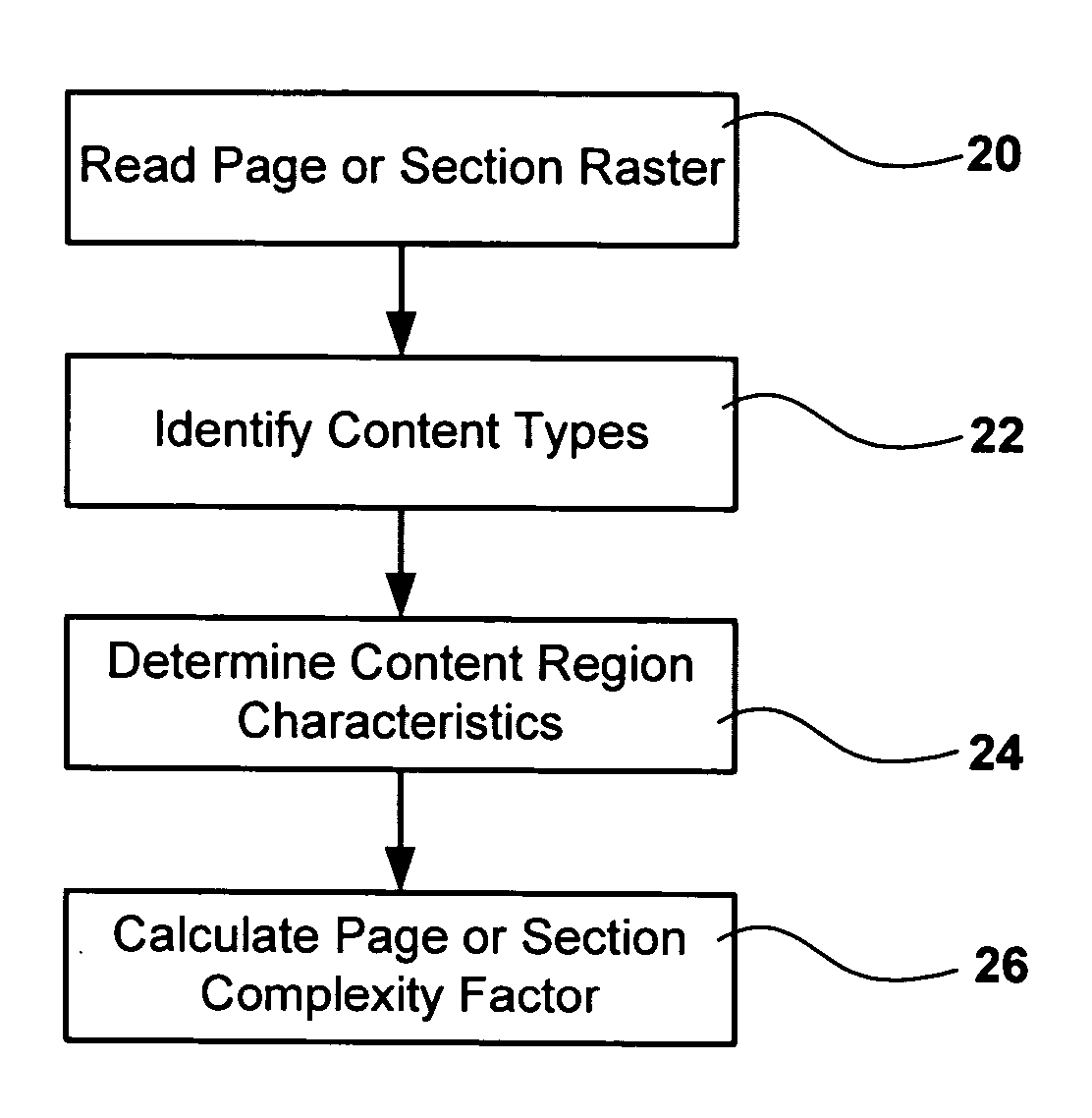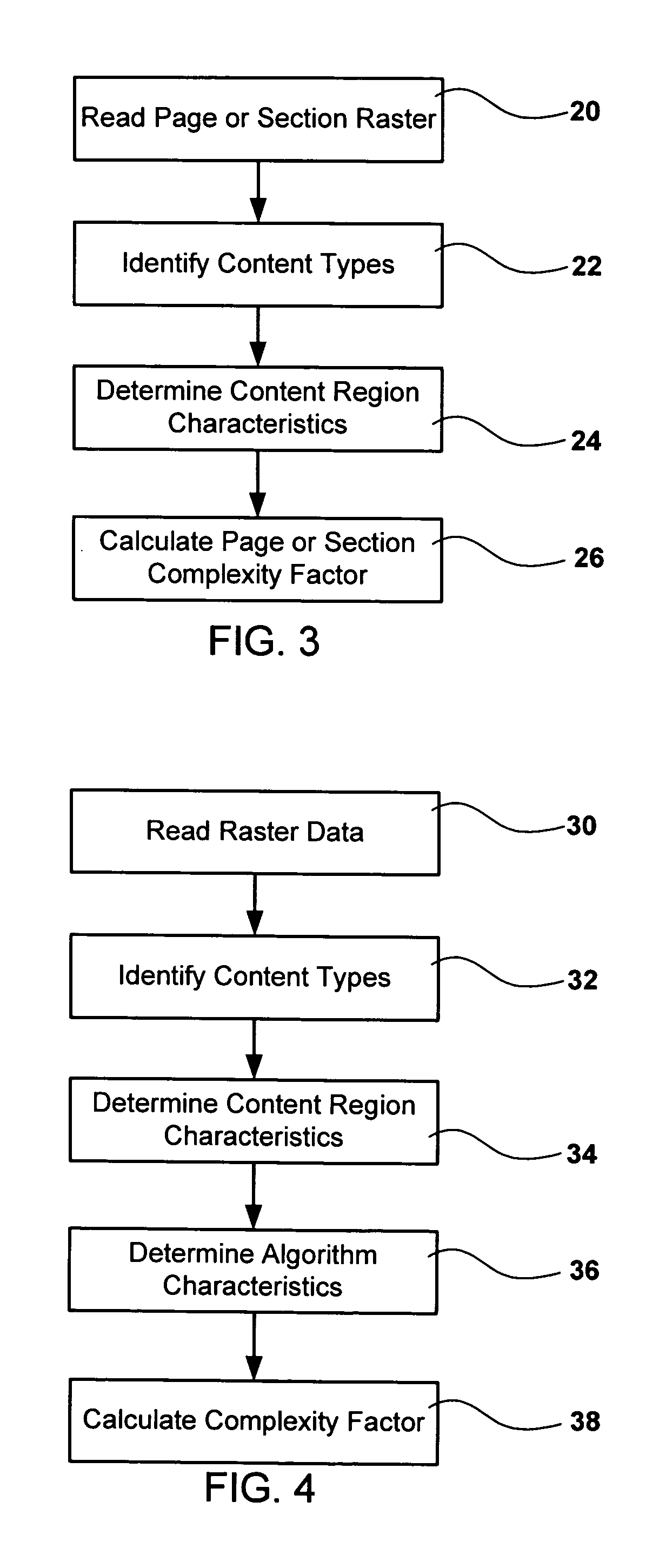Methods and systems for complexity-based process blending
a technology of complexity and process, applied in the field of complexity-based process blending, can solve the problems of using bitmap data, raster data and other forms of non-object-based data, and the available methods have not been combined with processing algorithm data to create an algorithm-related complexity factor
- Summary
- Abstract
- Description
- Claims
- Application Information
AI Technical Summary
Benefits of technology
Problems solved by technology
Method used
Image
Examples
Embodiment Construction
[0026] The described embodiments of the present invention will be best understood by reference to the drawings, wherein like parts are designated by like numerals throughout. The figures listed above are expressly incorporated as part of this detailed description.
[0027] It will be readily understood that the components of the present invention, as generally described and illustrated in the figures herein, could be arranged and designed in a wide variety of different configurations. Thus, the following more detailed description of the embodiments of the methods and systems of the present invention is not intended to limit the scope of the invention but it is merely representative of the exemplary embodiments of the invention.
[0028] Many of the embodiments described in this description are examples from the field of copying and reprographics, where segmentation is used to improve image quality through optimized, selective enhancement of page elements. However, these are only exempla...
PUM
 Login to View More
Login to View More Abstract
Description
Claims
Application Information
 Login to View More
Login to View More - R&D
- Intellectual Property
- Life Sciences
- Materials
- Tech Scout
- Unparalleled Data Quality
- Higher Quality Content
- 60% Fewer Hallucinations
Browse by: Latest US Patents, China's latest patents, Technical Efficacy Thesaurus, Application Domain, Technology Topic, Popular Technical Reports.
© 2025 PatSnap. All rights reserved.Legal|Privacy policy|Modern Slavery Act Transparency Statement|Sitemap|About US| Contact US: help@patsnap.com



